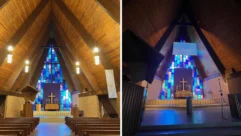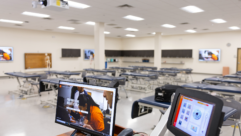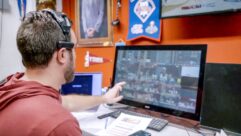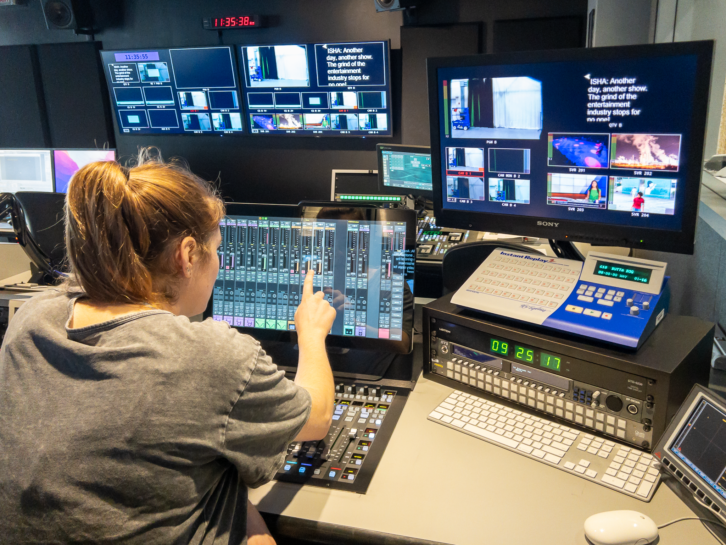
Emerson College has implemented a major upgrade of its broadcast audio capabilities at its downtown Boston main campus. Four television production control rooms are newly equipped with Dante-networked Solid State Logic System T digital audio platforms, each powered by a TE1 Tempest Engine offering up to 256-path capacity, that are variously controlled by an S300 surface and Tempest Control Rack (TCR) with Fader Tile and combinations.
An SSL System T S300 surface replaced the SSL C10 in the Audio A Suite, the audio control room for the Di Bona Television Studio — named for famed television producer Vin Di Bona, an Emerson alumnus—on the eighth floor of the Tufte Performance and Production Center (PPC). The 11-story, 80,000-squarefoot Tufte PPC was completed in 2003 and was the first purpose-built structure designed and built for Emerson College.
“We wanted to increase the flexibility of pooled resources among our facilities, and this summer we embarked on a complete central machine room initiative,” says Tim MacArthur, Director of Technical Operations for Media Technologies and Production (MTP), the department that oversees the use of the industry-leading equipment, production facilities and postproduction centers at Emerson College. “Previously we had three disparate machine rooms for our facilities, but wanted to consolidate, so we invested in new fiber to make that happen.” The Tufte Television Studios are now interconnected with the nearby Journalism Production Center, Emerson Television Channels, Bobbi Brown and Steven Plofker Gym and Cutler Majestic Theatre.
“In addition to the SSL components, we replaced the core Evertz router, installing a Dante hub, which brings our embedding, de-embedding and more into a Dante world for System T to pick from,” MacArthur says. “Using Dante with multicast was just such an appealing promise to us; being able to grab a mic from a preamp in one studio and bring it to a control room in another.” Systems integration for the upgrade project was provided by Diversified.
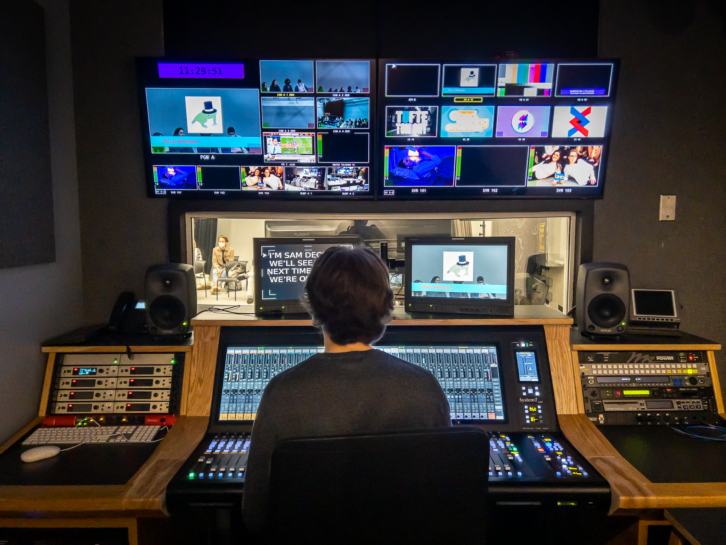 In addition to Di Bona Television Studio A, the Tufte Television Studios also includes Teaching Studio and Control Room B, a classroom inside a standard television control room, where the audio facilities now incorporate a System T TCR with a Fader Tile control interface. SSL’s TCR is a 3RU PC enclosure that runs the complete System T control software—essentially, a System T mixer in a rack. The mixer may be operated from a 15.6 -inch touchscreen or a Fader Tile, which is a hardware controller that offers 16 motorized faders and comprehensive status LEDs and provides fast access to 960 paths via dedicated Layer and Bank buttons.
In addition to Di Bona Television Studio A, the Tufte Television Studios also includes Teaching Studio and Control Room B, a classroom inside a standard television control room, where the audio facilities now incorporate a System T TCR with a Fader Tile control interface. SSL’s TCR is a 3RU PC enclosure that runs the complete System T control software—essentially, a System T mixer in a rack. The mixer may be operated from a 15.6 -inch touchscreen or a Fader Tile, which is a hardware controller that offers 16 motorized faders and comprehensive status LEDs and provides fast access to 960 paths via dedicated Layer and Bank buttons.
“What’s interesting for us, with the generation of students that we have now is the touch screen option,” MacArthur says. It’s second nature for a generation that has grown up with constant access to personal electronic devices to control a complex platform from a touch screen. “So many of our students will intuitively grab a ‘fader’ with their finger and slide it,” he says. “It’s a very elegant display.”




